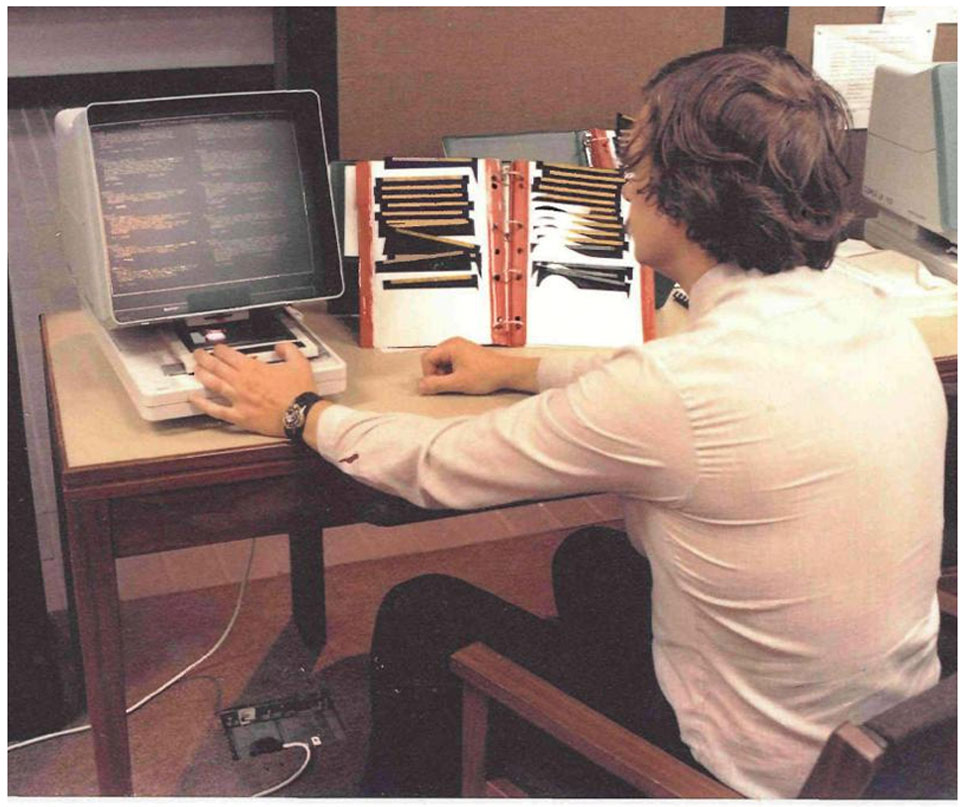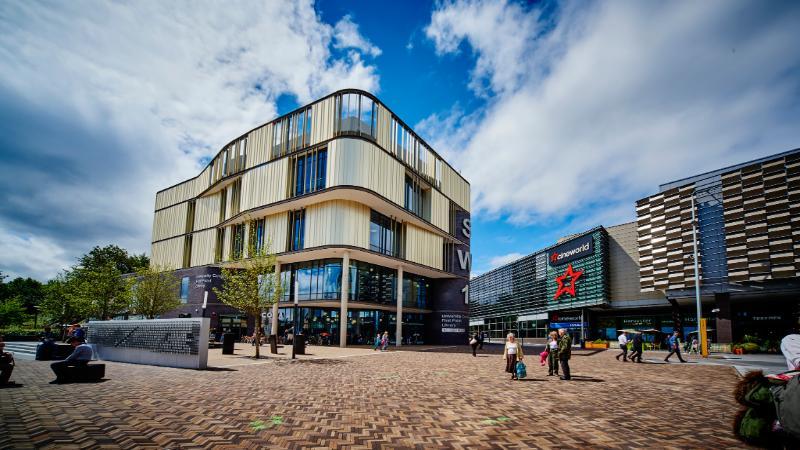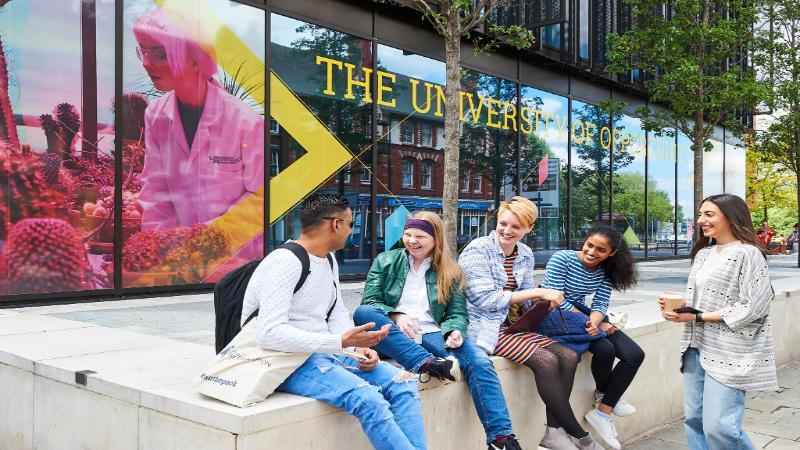Our History
The University of Wolverhampton is a leading modern university with a tradition of providing opportunity and academic excellence dating back nearly 200 years.
The early years (1827-1899)

The roots of the University of Wolverhampton lie in the 19th century growth of Mechanics Institutes, which provided vocational and general education for working men. The Wolverhampton Free Library also developed technical, scientific, commercial and general classes.
Teaching first began in 1851 at the School of Art, and the study of art became a key focus – with new buildings, and a new name for the Municipal School of Art in 1885.
Early 20th century (1900-1944)
By 1903, an educational foundation had firmly been established with over 1,300 students studying courses including coach building, house painting and pattern making. In 1905, the first student scholarships were awarded.
As student numbers continued to grow, expansion became necessary. In 1912, the ‘Deanery House’ in Wulfruna Street was bought and in 1920 it was demolished, making way for the iconic Wulfruna building you see today in Wulfruna Street.
The foundation stone of the major new buildings in Wulfruna Street was laid by Prince George in 1931.
The foundation stone was laid by HRH Prince George in 1932 and in 1933 the Wolverhampton and Staffordshire Technical College was born. With further education traditionally accessible only to the wealthy, the College vowed to ensure that even the most under-privileged men and women would have the opportunity to study a higher education – an ethos nurtured and sustained to the present day.
In 1933, the Wolverhampton Local Authority annual report states: "The college makes ample provision for the general education of young men and women not privileged to obtain their higher education by residence at a University. Particularly it is the local home of higher scientific and industrial studies."
Courses included science and engineering, and with the creation of a Women’s Department, over a third of the College’s students were women, bucking the traditional all-male trend typical of higher education establishments. Research was also on the increase, with the College welcoming graduates from universities as honorary members.
By 1938/9 we recorded 2,921 students on our annual statement to government. One third of those students were women.
The post-war years (1945-1968)

The post-war ‘boom’ in education led to a growing demand for a variety of subject areas and in 1945 a music department opened, enrolling an unprecedented 135 students in the first year.
In 1956 the Joint Education Committee of the college noted: "Research is essential feature of any institution of higher learning. Very good work is being done in applied science, and mechanical engineering is bringing to fruition negotiation with a local firm for sponsored research into problems at heat exchangers".
The 50s also saw the first computer arrive in the college. The annual report for 1956-7 records: Following a visit of a member of staff to Harwell, the college in competition with eight other colleges was offered the gift of an Electronic Digital Computer. A number of local firms donated sums of money to cover the cost of maintenance and operation.
In 1957, the College was awarded one of the earliest digital computers in the UK. Renamed WITCH – Wolverhampton Instrument for Teaching Computation from Harwell – it was the first computer to ever be used at the College and remained a central teaching tool until 1973.
Nearby, at Walsall, a new West Midlands College of Education was created in 1963. The College was linked to the Walsall local education authority but had a governing body nominated by a cluster of local authorities. It quickly expanded from its first four-story teaching block and student residences to a site with a substantial number of buildings, including a study block, library, hostels, refectory, physical education facilities and music centre, and over 1,000 teacher trainees by the early 1970s.
By 1964 with the further expansion of Higher Education the college began to provide BA degrees with options in English, Geography, History, Music, and Economics amongst others. By 1965 the college was offering a degree in Computer Technology.
By 1966, with student numbers at over 6,000, the College began to provide Bachelor’s degrees with options in English, Geography, History, Music, Economics and Computer Technology and the first ever degree ceremony was held.
As the Councils for National Academic Awards (CNAA) was set up after the Robbins report, the Chairman Lord Kings Norton presented the first degrees at the college in 1967. The college was poised for enhanced status.
On 1st September 1969 the Secretary of State handed over the designation document which states: This instrument records the designation of this institution as a Polytechnic on 1st September 1969. In commemoration of this on behalf of HM Government I hereby set my seal.
Wolverhampton Polytechnic (1969-1991)

On 1 September 1969, the College was officially designated a Polytechnic. Comprising five Faculties: Applied Science, Art and Design, Arts, Engineering, and Social Sciences, a further Faculty of Education was established in 1977.
The seventies also saw Wolverhampton develop into a truly international community with students from Iran, Malaysia, and Nigeria. The delivery of Wolverhampton courses internationally beginning to flourish, with the faculty of Art and Design entering into academic exchange programmes with Alfred University (New York), and the Faculty of Education began consultancy work in Egypt.
In 1983, a second Royal visit, this time from HRH The Duke of Kent, officially opened Wolverhampton Polytechnic as a stage VIII Polytechnic institution, and this was followed by a period of rapid expansion over the next ten years. A merger with the West Midlands College of Education in 1991 led to the creation of what is now Walsall Campus, and further mergers with Teacher Training Colleges in Wolverhampton and Dudley led to the construction of an ambitious third campus in Telford.
The University of Wolverhampton (1992-present)
In 1992, Wolverhampton Polytechnic was granted university status and became the University of Wolverhampton. Today our three faculties offer courses in over 70 different subjects and over 4,000 students graduate from Wolverhampton each year.
We continue to invest in our students, staff, alumni and in the local and international community. We have invested more than £125 million on campus developments and teaching facilities, including £50 million on improving our facilities at Walsall Campus; the innovative Performance Hub; new and refurbished Students’ Unions and further modernisation of our Learning Centres.
Our Ambitious Investments
Having invested considerably in campus developments in the past 25 years, the University’s £250 million “Our Vision, Your Opportunity” investment generation programme made a positive impact on the student experience through investment in buildings, facilities, teaching, research and skills training.
The ambitious plans to invest in education, training and economic growth in the region have included the Rosamund Franklin building which focuses on the teaching of science, constructing a new Business School building, refurbishing engineering facilities at the Telford Campus, committing to the regeneration of Springfield Brewery, creating an international campus hub for construction excellence, and the Science, Technology and Prototyping Centre at the Science Park. This centre has been shortlisted and won a number of awards since opening, including winning the Best Large Commercial Project at the LABC regional awards and also being a national finalist in the same category.
- INSIDER Property Awards 2018 – Construction Project of the Year - West Midlands Regional Finalist
- RICS Awards 2018 - Design Through Innovation – Finalist
- RICS Awards 2018 - Best Regeneration Project – Finalist
Telford Campus

The purpose-built Telford Campus benefited from a £10 million investment in advanced, new engineering facilities and enhanced courses – a response to the regional and national shortage of qualified engineering graduates, providing students with access to technology at the forefront of engineering developments.
Wolverhampton City Campus

Following on from more than 80 years of providing business education in the city, the University’s new £18 million flagship building for University of Wolverhampton Business School, the in Wolverhampton’s University Quarter, opened its doors in November 2015.
The Lord Swraj Paul Building is home to an executive education suite, innovative teaching and learning spaces, an IT suite, consulting rooms and a central social space and café, and for a regeneration award in this year’s West Midlands Regional RICS Awards 2017.
A £4 million investment to redevelop the food court at Millennium City Building saw improvements made to the main courtyard area, with catering facilities extended and refurbished, and the entrance to the building improved.
An investment of £21 million in the Rosalind Franklin Science Building in the University Quarter provided students with a range of new laboratories which include laminar flow cabinets, micro-biological safety cabinets and fume cupboards. At the heart of the building is the Outreach Laboratory which provides flexible resources for both local and worldwide schools via internet video links.
Walsall Campus
The University invested £17 million in a new three-storey Performance Hub in 2011, enhancing its growing Performing Arts reputation and providing state-of-the-art teaching and performance space for dance, drama and music students.
The new building was built on a former teaching tower and Halls of Residence, and offers dance and drama rehearsal spaces as well as music practice rooms, recording studios and music technology suites. There is also a theatre space with dressing and changing rooms, a green room and additional performance spaces.
University of Wolverhampton Science Park
Built on land at the Science Park, the University has invested £10 million in a new Science, Technology and Prototyping Centre – with a £4.8 million grant from the Growth Deal through the Black Country Local Enterprise Partnership. The three-storey development will feature high quality offices, labs and workshops.
Springfield Campus

The new Springfield Campus is the culmination of the most ambitious aspect of the University of Wolverhampton’s Our Vision, Your Opportunity programme.
The site of the former Springfield brewery has been transformed into Europe’s largest specialist construction and built environment campus, bringing together businesses and the education sector to maximise impact on the economy.
Since its purchase in 2014, the derelict site has been rejuvenated into a centre of excellence for construction and the built environment, delivering an unbeatable Skills pathway for construction education and training from the age of 14 to senior professionals.
As the home of the Thomas Telford University Technical College, the University’s School of Architecture and Built Environment, and the Elite Centre for Manufacturing Skills, it’s central to our vision of enhancing the student experience and supporting business growth.
The £120 million development is acting as the catalyst for economic and social regeneration, tailored to creating jobs and delivering the technical and professional experts required by the industry.
National Brownfield
The University’s plans to develop a National Brownfield Institute (NBI) is to receive £14.9 million of funding from the Government’s Get Building Fund, which is aimed at projects that could be started within 18 months, create jobs, and generate investment to aid the economic recovery from COVID-19.
This new £17.5 million NBI will research and develop new construction methods and ways of regenerating contaminated land.
The NBI will be a world-class institute providing the facility to develop advanced skills, technologies and methodologies through innovation and partnership with the construction industry; focuses on the practical application of future brownfield regeneration through the work of research teams; and leads policy development, research and innovation, and commercial services for brownfield regeneration.
Combined with the 12-acre Springfield Campus, the NBI will lay the foundation for the delivery of a National Centre for Sustainable Construction and Circular Economy, which will focus on sustainability and the climate change emergency.
Enhanced health facilities
In January 2020, the University opened its new £4.8 million health facilities, which includes a two-storey extension to existing facilities in the Institute of Health. Students became able to practice skills in a safe environment with a fully enabled Panopto facility. This allows for the filming of sessions to give students the ability to review their progress and see their work from the perspective of a patient.
The clinical skills facilities include practice labs, which enable students to practice everything from cannulating a patient’s vein to inserting a catheter, all the way to running full-scale patient procedure scenarios such as dealing with sepsis or cardiac chest pain. There are also facilities for midwives dealing with mothers and new-born babies, children’s nursing facilities, and learning disability facilities. There is also an anatomage table: a digital table that allows students to virtually dissect anatomy.


/prod01/wlvacuk/media/departments/digital-content-and-communications/images-2024/240624-Alumni-Awards-2024-Resized.jpg)
/prod01/wlvacuk/media/departments/digital-content-and-communications/images-18-19/220325-Engineers_teach_thumbail.jpg)
/prod01/wlvacuk/media/departments/digital-content-and-communications/images-2024/240627-UN-Speaker-Resized.jpg)
/prod01/wlvacuk/media/departments/digital-content-and-communications/images-2024/240320-Uzbekistan-Resized.jpg)
/prod01/wlvacuk/media/departments/digital-content-and-communications/images-2024/240229-The-Link-Resized.jpg)
/prod01/wlvacuk/media/departments/digital-content-and-communications/images-18-19/240726-Paramedics-Simulation-Resized.jpg)